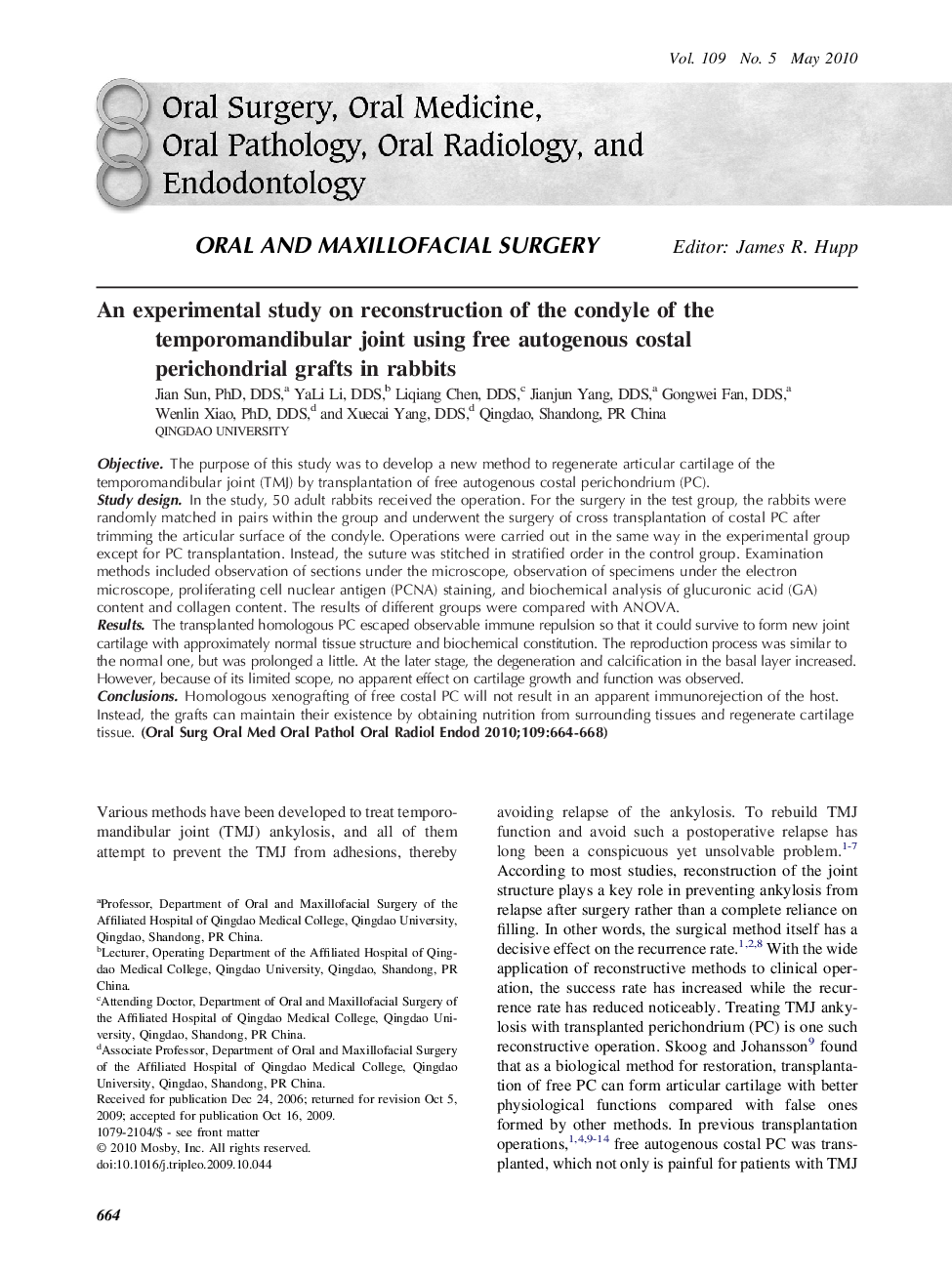| Article ID | Journal | Published Year | Pages | File Type |
|---|---|---|---|---|
| 3167623 | Oral Surgery, Oral Medicine, Oral Pathology, Oral Radiology, and Endodontology | 2010 | 5 Pages |
ObjectiveThe purpose of this study was to develop a new method to regenerate articular cartilage of the temporomandibular joint (TMJ) by transplantation of free autogenous costal perichondrium (PC).Study designIn the study, 50 adult rabbits received the operation. For the surgery in the test group, the rabbits were randomly matched in pairs within the group and underwent the surgery of cross transplantation of costal PC after trimming the articular surface of the condyle. Operations were carried out in the same way in the experimental group except for PC transplantation. Instead, the suture was stitched in stratified order in the control group. Examination methods included observation of sections under the microscope, observation of specimens under the electron microscope, proliferating cell nuclear antigen (PCNA) staining, and biochemical analysis of glucuronic acid (GA) content and collagen content. The results of different groups were compared with ANOVA.ResultsThe transplanted homologous PC escaped observable immune repulsion so that it could survive to form new joint cartilage with approximately normal tissue structure and biochemical constitution. The reproduction process was similar to the normal one, but was prolonged a little. At the later stage, the degeneration and calcification in the basal layer increased. However, because of its limited scope, no apparent effect on cartilage growth and function was observed.ConclusionsHomologous xenografting of free costal PC will not result in an apparent immunorejection of the host. Instead, the grafts can maintain their existence by obtaining nutrition from surrounding tissues and regenerate cartilage tissue.
